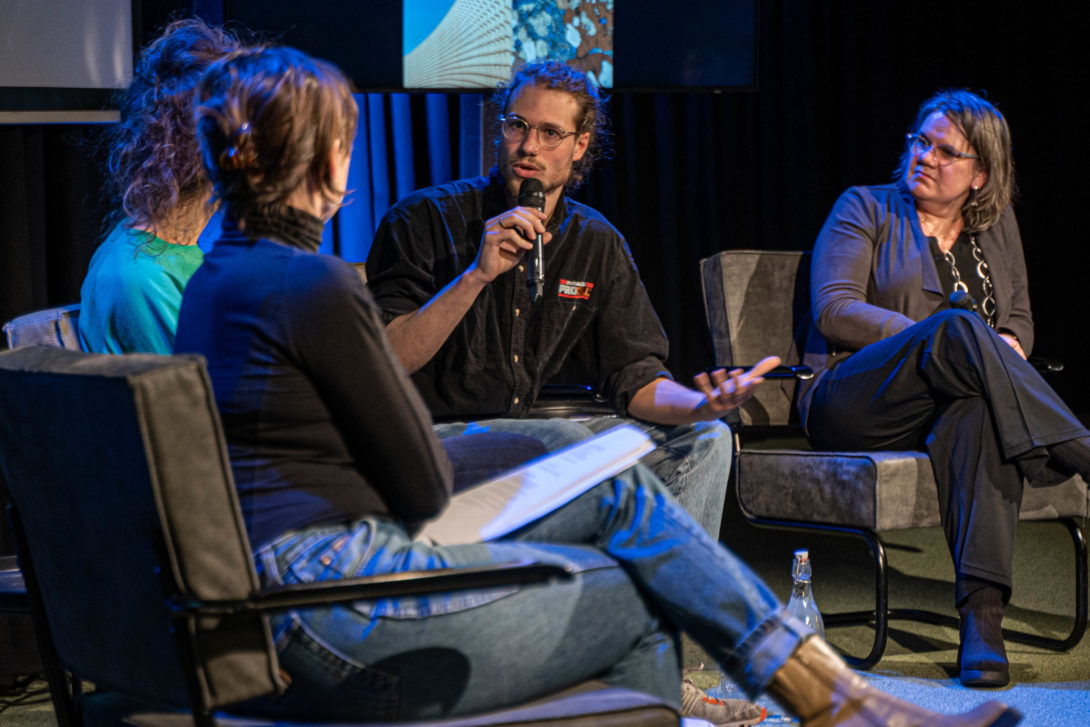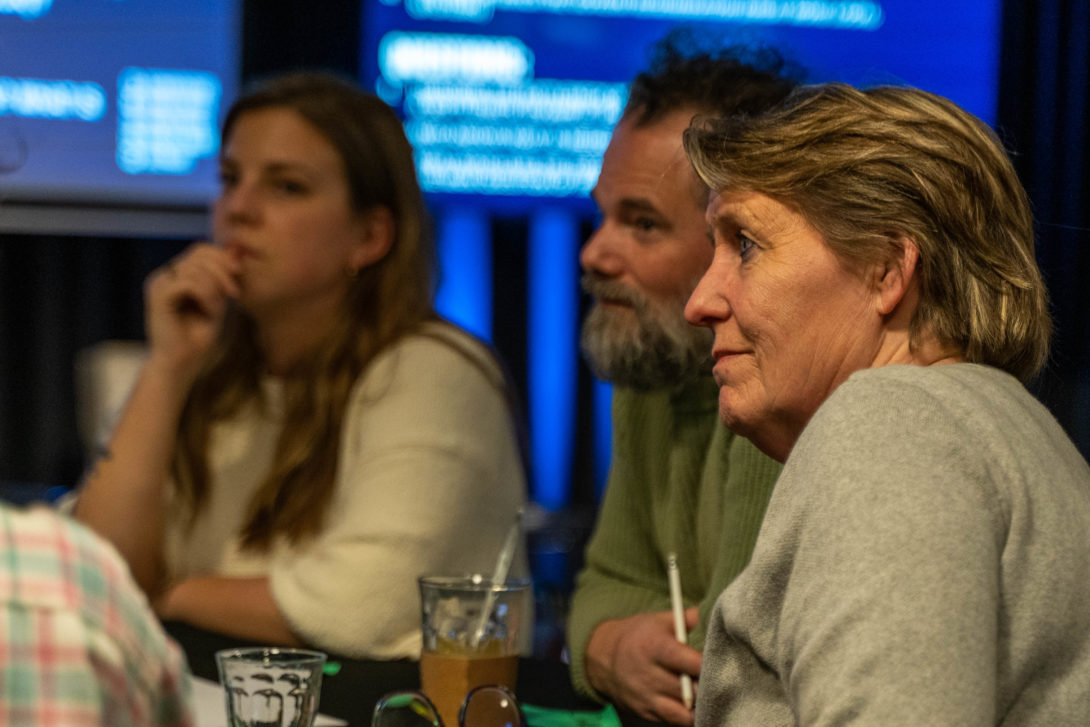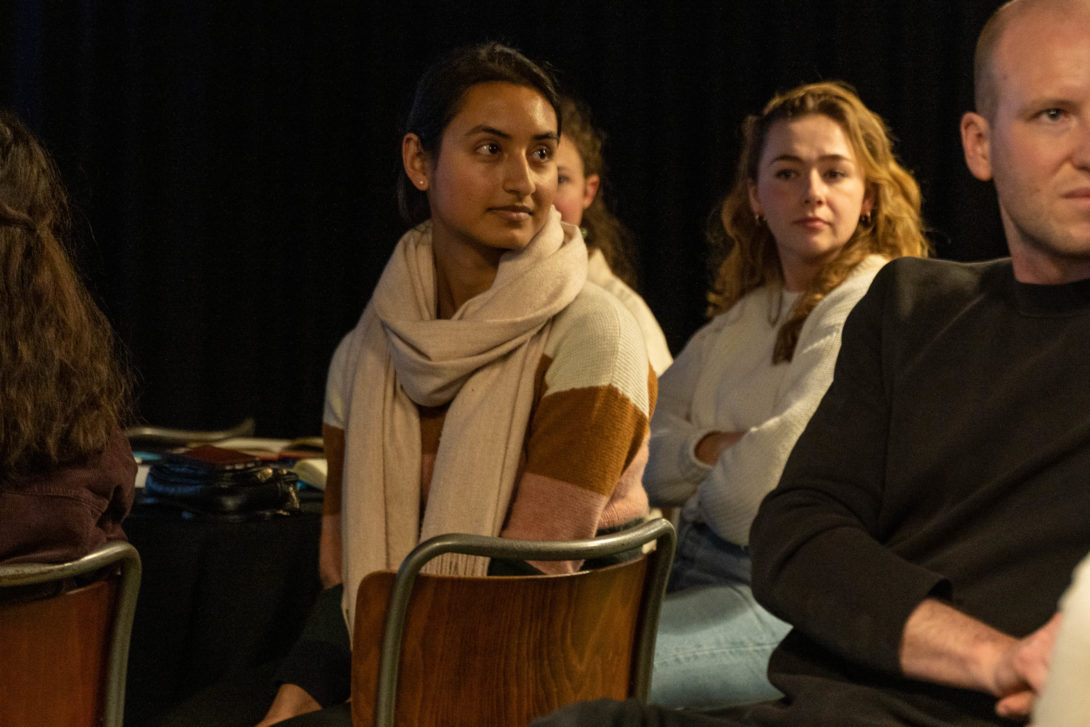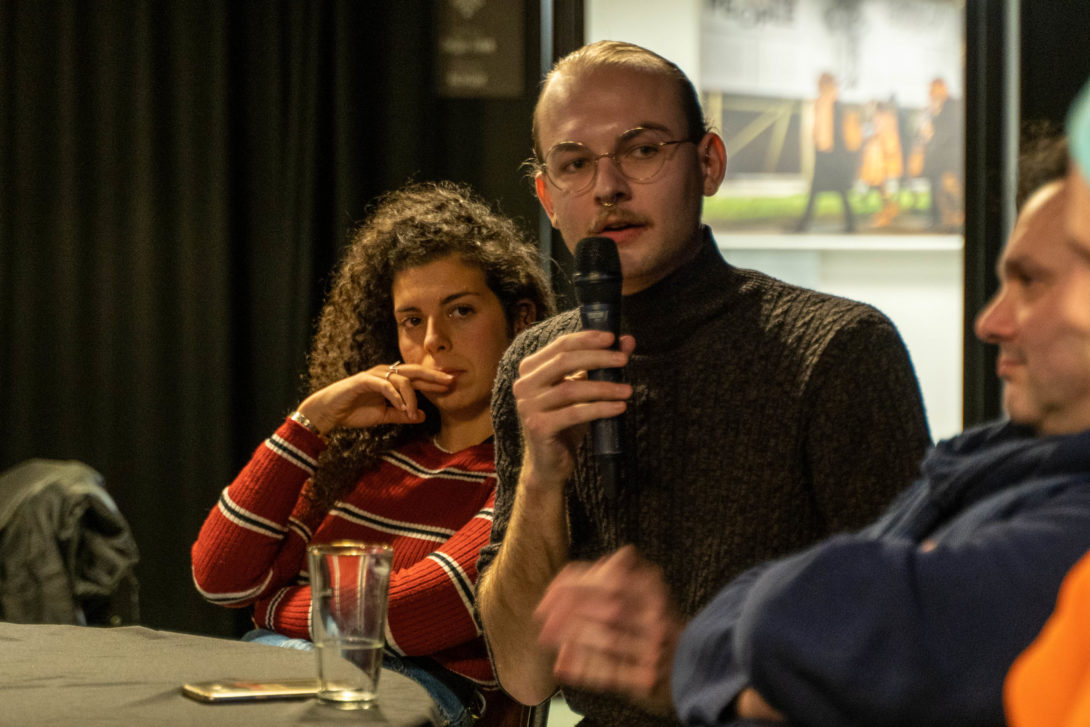Circular cities, donut economics, regenerative design. These are concepts that we will think, talk and do more with in the past few years. New economic, industrial, and design principles to move toward an ecological and socially sustainable future. In previous Distributed Design programs, we have invited designers and researchers to share their experiences, concepts, and bottlenecks. We have learned about the movement of designs across the globe, using locally sourced and used materials. The examples of these talented designers are promising, but if we zoom out we notice that we still live in a linear single-use economy.
Pakhuis de Zwijger organised a workshop on February 23rd and challenged the participants to a regenerative way of thinking. Is it possible to make regeneration more ‘mainstream’? Can regenerative design help to reach our sustainable ambitions? What are the next steps we must take to move toward a truly sustainable economy? What can we do as a city, designer, or consumer?
In the workshop we discussed the concept of regeneration, determined bottlenecks and defined the topics that should be discussed in a bigger public event at Pakhuis de Zwijger in autumn. There were over 40 participants in the workshop, existing of researchers, students, policymakers from the city of Amsterdam, two big industrial companies from the region and of course our creative talents.
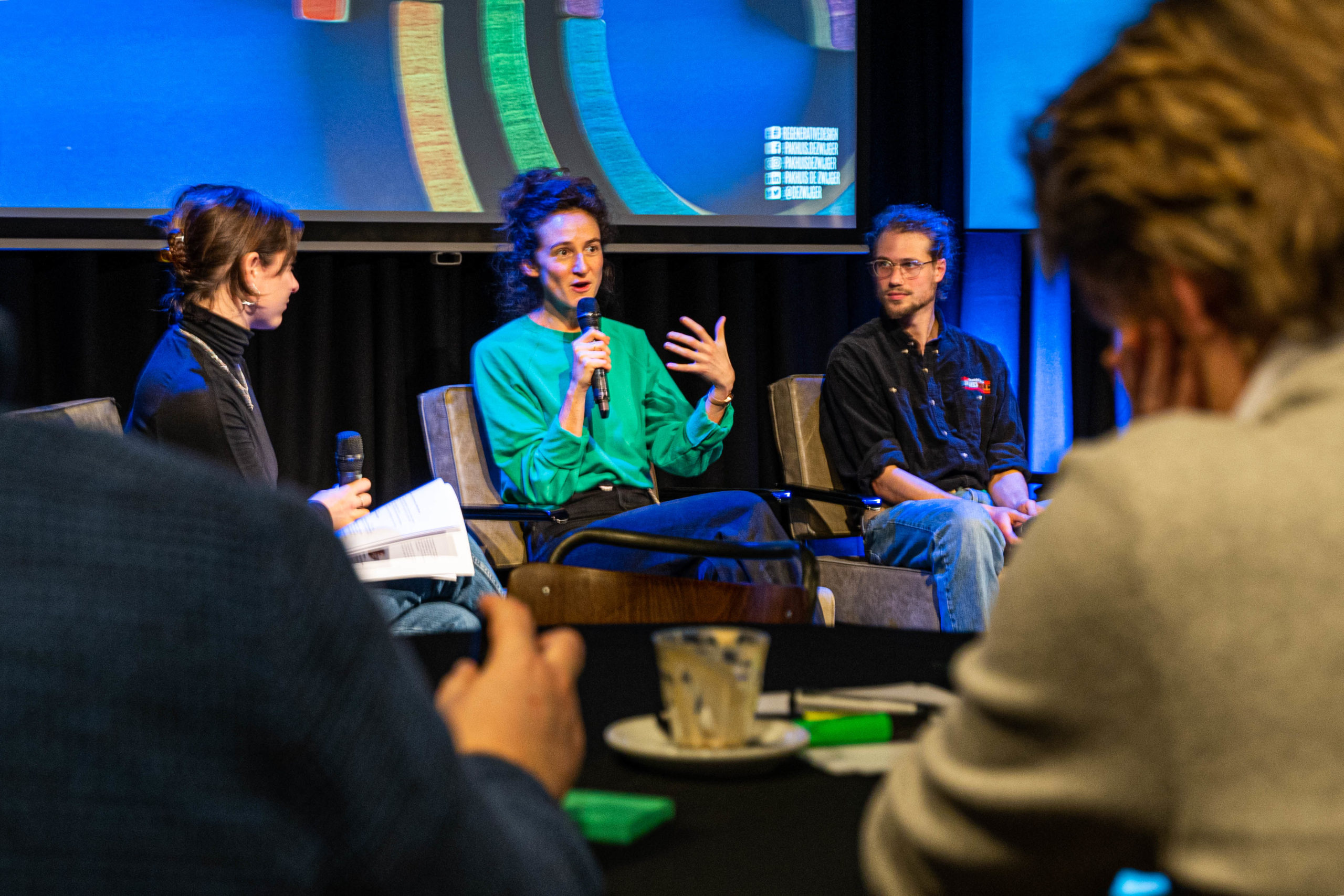
The event was opened by three experts in the field of sustainable design. Joke Dufourmont, a Program Developer Circularity in Urban Regions at Amsterdam Institute for Advanced Metropolitan Solutions (AMS Institute) . Her primary aim is to valorize scientific research in translating it to innovative solutions that advance the city’s circular economy. In her work, she pays particular attention to advancing circularity as a systemic solution to achieve human prosperity within planetary boundaries. Inge Oskam. a lecturer in Circular Design & Entrepreneurship at the Amsterdam University of Applied Sciences (HvA) . Inge specializes in practice-oriented research at the interface of design, technology, and business, focusing on the transition to a circular city. She leads research into the possibilities for reusing residual materials in circular products and system innovations for closing urban material cycles. The research focuses not only on the concrete solution but also on the circular business models. Felix Bruns is a Community Builder & Intervention Producer at Climate Cleanup Foundation, an independent entrepreneurial non-profit funded by members. They pioneer systemic interventions to enable carbon return on land, in oceans, rocks, and constructions. Climate Cleanup fosters the fundamental conditions for the regenerative new nature economy. Natural Climate Solutions can provide over 30% of the solution to reverse climate change, but do not receive even 3% of funding. They are closing this gap by creating conditions for entrepreneurs and organizations to flourish.
After the panel we started a group assignment and discussion leading to several bottlenecks and other conclusions. As a result of the workshop the two knowledge institutions involved in the panel (AMS Institute and HvA) offered to join and participate in the organisation of the bigger public event in autumn. Also students from different universities and faculties met each other and are starting a project on regenerative design together. The people joining from the municipality of Amsterdam were inspired and connected with the Distributed Design talents that were present to share more knowledge, information and a possible assignment in the future.
BOTTLENECKS
During the panel conversation three bottlenecks were defined on which we started the session with all participants in the workshop. The question was to further define the bottlenecks and come up with possible solutions.
- Finding new governance models for regenerative design and collaborations.
In modern society we deal with systems, hierarchy, norms and values. These concepts are mainly based on ‘the old economy’ and are not suited for a regenerative way of working, thinking and acting. We need new ways of working together, communicating and re-define what we/ a neighbourhood/ nature/ an organisation needs. Should collaborations be more decentralised? Does nature need a seat at the table? How do future generations participate?
- Challenging the tax-system, since taxes on (raw) materials are higher than the taxes on labor.
Designers, makers and industries are not stimulated to use different or less new materials, because the taxes on raw materials are so low. At the moment it is more expensive to recycle materials than to extract new raw materials from the earth. This causes for the wrong incentives.
- Creating a holistic systemic indicator to define regeneration, that is still easy enough to operate and understand.
People are talking a lot about regeneration, but it hasn’t been defined yet what we mean by that. The consequences from this bottleneck is that anyone could use the term regeneration, without actually acting in a way that helps the earth thrive.
CONCLUSIONS
Today people are using many different words and definitions to describe sustainable design, policy, production or consumption. Also in the workshop on the 23rd of November we used the terms nature inclusive, regenerative, circular and sustainable many times in the same conversation. That caused for confusion, but also raised the question if we should or have to avoid that. If we all work towards the same goal it should not have to be a problem. It is not necessary to define one universal definition, but it is helpfull to understand what our common goal is. In what world do we want to live? How can we respect the natural sources of the earth and give back instead of only taking away its beauty? How can design help to create a sustainable live for future generations?
Other conclusions from the workshop were that we could learn from other initiatiaves, sectors or cultures that already work in a regenerative way. We should not only focus on innovation and technology, but also look back in history and other cultures across the globe to truly understand our relation with nature. An important take-away was to learn about regeneration young and include the concept in education.
It was an open, inspiring and valuable workshop were new personal connections were made, critical questions were asked and great ideas were shared.
Story by Pakhuis de Zwijger


